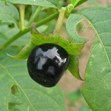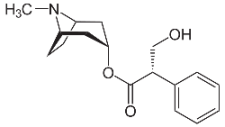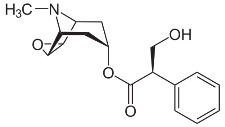Interactions
All life on Earth depends on other life in order to survive - no one species is self-sufficient enough to survive all on its own. Atropa belladonna is no exception to this rule. It depends on various other species from all kingdoms to survive.
Fungi
Just like many other plants, Atropa belladonna has a mutualistic relationship with fungi. There are two ways that Deadly Nightshade is associated with fungi:
1. Endomycorrhizae - Mutualistic fungus, from the Zygomycota phylum of Fungi, form endomycorrhizae with Deadly Nightshade, which is a close association with the roots of the plant. Basically, the fungus grows inside the roots of the plant, and exchange nutrients with the plant. Both Atropa belladonna and the Zygomycota benefit.
2. Endophyte - Fungi also live within the leaves of Atropa belladonna, in the spaces between the cells. The specific fungi found within Deadly Nightshade, Mycelia sterila, is classified as a deuteromycete, or a fungus with no known sexual state. Mycelia sterila received this classification because, being inside the plant, and interwoven between the cells, it is very difficult to observe the fungus and its reproduction. In an endophytic symbiosis, both organisms benefit - the fungus receives protection and nutrients from the plant, and the plant receives nutrients from the fungus.
Arthropods
_-1.jpg)
Deadly Nightshade relies heavily on other organisms
to spread their pollen from plant to plant so they can reproduce.
The wind can also aid in pollen dispersal, but animals are much more
accurate. In particular, bees are very helpful in the plant's
reproduction. Bees are attracted to the beautiful purple color of
Nightshade's flower, and land on it, picking up some pollen while
it's there. Then, the bee moves on to the next flower, where it
deposits the pollen, which can then make its way to the ovule for
fertilization.
© Luis Miguel Bugallo Sánchez 2010
Toxin
Not all of Atropa belladonna's interactions with other organisms are beneficial, however. It's not called Deadly Nightshade for nothing. Deadly Nightshade is...well...slightly deadly.
The
reason Deadly Nightshade lives up to its name is because of the
deadly © Jeantosti
2004
 toxin contained in all parts of the plant. The roots are the
most toxic part, with berries as a close second. It could take as
few as two berries to kill a child, and as few as ten to kill an
adult.
toxin contained in all parts of the plant. The roots are the
most toxic part, with berries as a close second. It could take as
few as two berries to kill a child, and as few as ten to kill an
adult.
The main components of Deadly Nightshade's toxin that actually cause the negative effects in most animals are atropine, hyoscyamine, and scopolamine (also known as hyoscine). It also contains an alkaloid called solanine, which is found in various other members of the potato family - in fact, solanine is what is present in those green spots in potatoes that you're not supposed to eat.
Solanine affects animals through interactions with the mitochondria. It opens up the potassium channels of the mitochondria, releasing their calcium ions into the cytoplasm of the cells. This triggers apoptosis (a fancy term for cell death).
Atropine, hyoscyamine, and scopolamine all have both anticholinergic and antimuscarinic properties. Being anticholinergic means that these agents block the activity of the neurotransmitter acetylcholine.
Acetylcholine is normally in charge of regulating parasympathetic nervous system functions (important things like breathing). The alkaloids in the toxin of Atropa belladonna are able to block these functions, because their structures are so similar to that of acetylcholine that they can trick nerve cells into binding with them instead of acetylcholine. This blocks acetylcholine from being transmitted from neuron to neuron, effectively stopping neurons from communicating with each other. As a result, the nervous system begins shutting down, resulting in paralysis if the person ingests enough of the toxin.



Hyoscyamine
Atropine
Scopolamine
Being antimuscarinic just describes which acetylcholine receptor is blocked by the alkaloid. The two types of acetylcholine receptors are muscarinic and nicotinic. Antimuscarinic agents, or muscarinic receptor antagonists (MRA), block acetylcholine from binding to the muscarinic receptor. These receptors deal more with parasympathetic functions of the body, whereas nicotinic receptors deal more with voluntary body functions, such as the movement of skeletal muscle.
Of the anticholinergic components in Atropa belladonna's toxin, scopolamine poses the biggest threat to the central nervous system (CNS) because it can cross the blood-brain barrier. This means that it can block neuron transmission and reception of acetylcholine in the brain, where most bodily functions are regulated.
After ingesting part of the plant, whether it be a berry or part of a leaf, it takes roughly half an hour to an hour for the symptoms to manifest. Some of the symptoms caused in humans by Atropa belladonna toxin are:
- Dilated pupils/blurred
vision
- Headache
- Tachycardia (abnormally fast heartbeat)
- Convulsions
- Loss of muscular coordination
- Paralysis of involuntary muscles
- Confusion/delirium
- Hallucinations
For some yet unknown reason, some animals seem to be resistant to Deadly Nightshade toxin. Horses, rabbits, sheep, goats, and pigs have all been observed eating the leaves of Deadly Nightshade without visible negative symptoms, and some birds are able to consume the berries. These animals also aid in the distribution of Atropa belladonna, carrying the seeds around and depositing them in different locations.
Click here to read some
interesting facts about Deadly Nightshade,
or click here to go back to the Home page.



